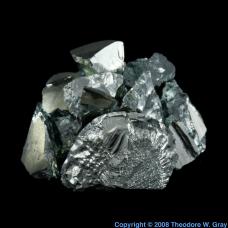So, I assume you have seen today's title "1/2 metal". Ok! Today topics is actually all about element BUT I will focus more on 1/2 metal aka semi metal
Today content will separate to 3 parts
PART 1 : ELEMENT
PART 2 : METAL AND NON-METAL
PART 3 : SEMI METAL!
(If you are only interested in the semi metal, just skip into part 3.)
SO, LET'S GET STARTED!!
PART 1 : ELEMENT
Element, element, element...... What is element? Element is a certain object which has only one type of atom, just like if the boy bathroom is a element, the boys in it the atoms and there are 1 type of atom which are the boys. Now the real element, here's some examples on element.
Ex 1 : Hydrogen, there are only 1 type of atoms which are hydrogen atoms
Ex 2 : Bromine, there are only 1 type of atoms which are bromine atoms
Ex 3 : Even the oxygen that we talk about in the last chemistry posts is a element. It only has a type of atoms which are oxygen atoms.
PART 2 : METAL & NON-METAL
Element can classify into three group
- Metal
- Non-metal
- Semi metal
In this part, we will be covering metal & non-metal first. Here's the properties of metal and non-metal.
Properties of metal:
1) Strong
2) Malleable
3) React with oxygen to form basic (alkaline) oxides
4) High melting and boiling point
5) Good conductors of electricity and heat
6) When they are form into ions, they are positive ions.
7) High density
8) Example : Iron, Magnesium, Sodium, Lead, Tin, Aluminium and Calcium
Properties of non-metal
1) Brittle (Easy to break)
2) React with oxygen to from acidic oxides
3) Low melting and boiling points
4) Poor conductors of electricity and heat
5) When they are form into ions, they are negative ions expect hydrogen ions.
6) Low density
7) Example : Oxygen, Helium, Chlorine, Carbon,Sulphur and Neon
Now the uses of metal and non-metal and the properties that caused people make it
(Properties → Uses)
Uses of metals
1) Hard & shiny appearance → to make jewellery
2) Good conductors of heat → to make pans
3) Malleable & good conductors of electricity → to make electrical cables and wire
4) Strong → to build scaffolding and bridges
 Strong enough to build scaffolding
Strong enough to build scaffolding
Uses of non-metal
1) Poor conductors of electricity → to make insulating materials around wire cables.
2) Poor conductors of heat → to make pan handle
3) Low density → to make hovercraft float
4) Low melting point & boiling points → use as fossils fuels to cook food
 Fossils Fuels for cooking
Fossils Fuels for cooking
PART 3 : SEMI METAL!!!
Now the interesting part, semi metal or metelloids or I like to called it 1/2 metal. Semi metal has the properties of both metal and non-metal. Here's the properties and uses for each semi metal.
Properties of semi metal
1) Solid state in room temperature
2) Brittle
3) Semi conductors (not good and not poor conductors of electricity and heat)
4) React with metal to form alloys
5) There are only 7 semi metal have been found which are Boron, Silicon, Germanium, Arsenic, Antimony, Tellurium and Polonium.
Uses of each semi metal
1) Boron and Silicon
These are borosilicate glass beaker. By using borosilicate glass on beaker or other stuff, it will hard to crack when heated. It is because it has a low rate of expansion
2) Arsenic
Arsenic or chromated copper arsenate (CCA) for exact, is an alloy of chromium, copper and arsenic. CCA is used for preserving wood and timber treatment.
3) Silicon
Jade and topaz are silicon compound or we usually called it silicate. These silicate are usually use for jewellery and necklace.
4) Germanium
Germanium is also used as a catalyst. A catalyst is used to speed up or slow down a chemical reaction. The catalyst does not undergo any chemical change during the reaction. Germanium catalysts are used primarily in the production of plastics
5) Antimony
 Antimony used in alloy like antimonial lead to greatly increases the hardness and mechanical strength of lead
Antimony used in alloy like antimonial lead to greatly increases the hardness and mechanical strength of lead
6) Tellurium
 Tellurium is added to lead to increase its strength and resistance to sulfuric acid
Tellurium is added to lead to increase its strength and resistance to sulfuric acid
7) Polonium

Polonium is used on brushes for removing dust from photographic films
Ok! I have now totally cover the whole topics of element. Hope you enjoy and feel free to comment below. Thank you for stopping by.



